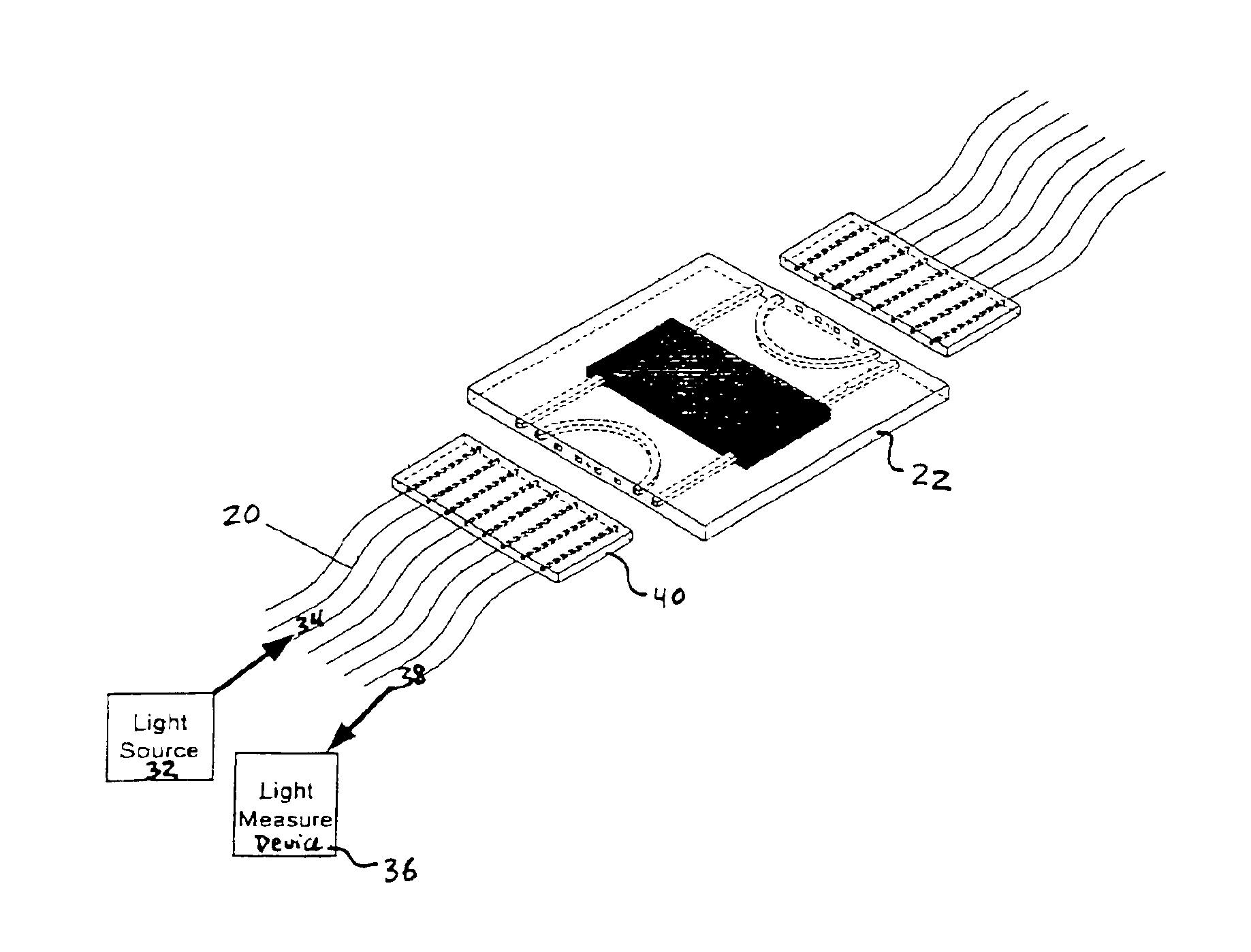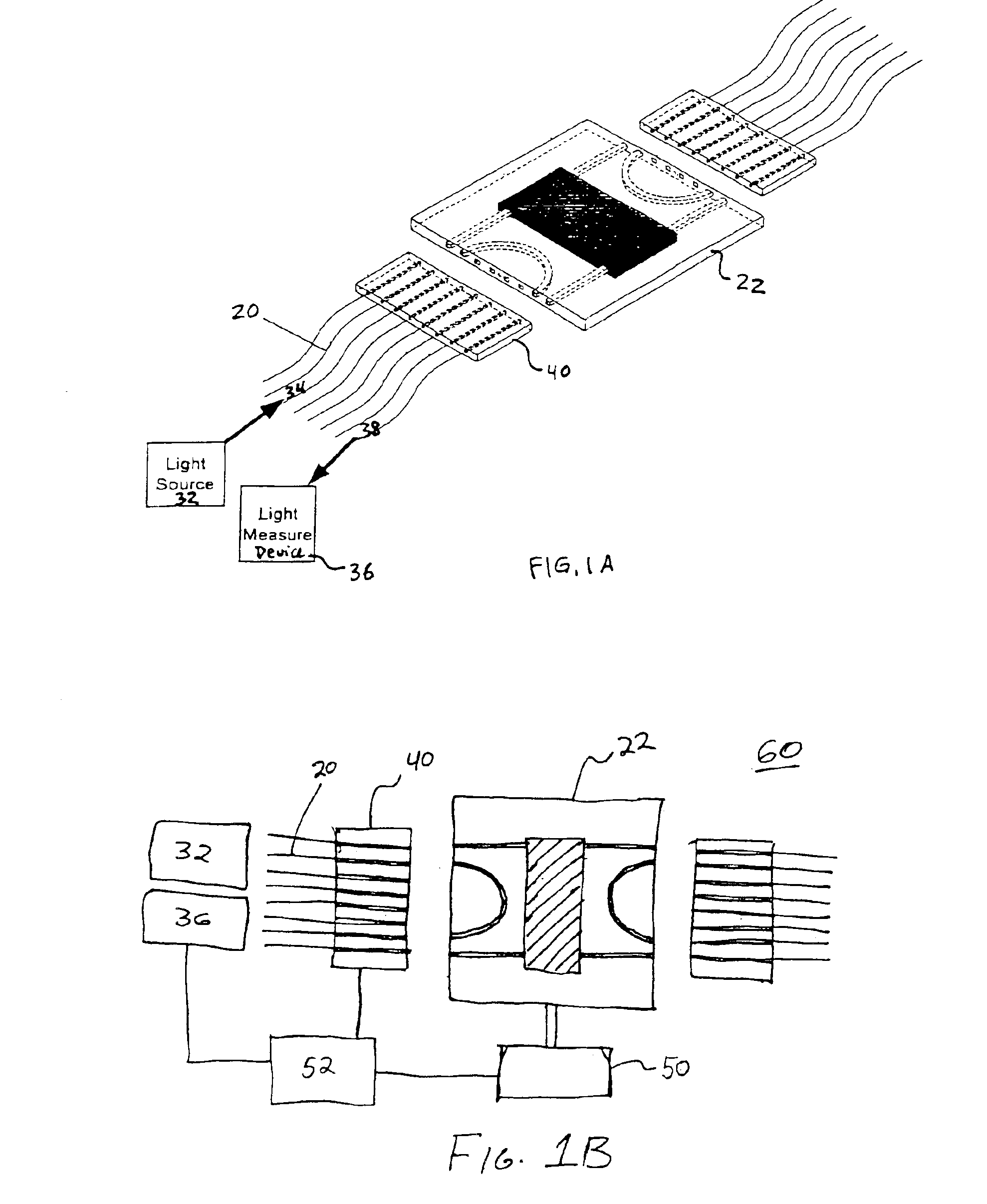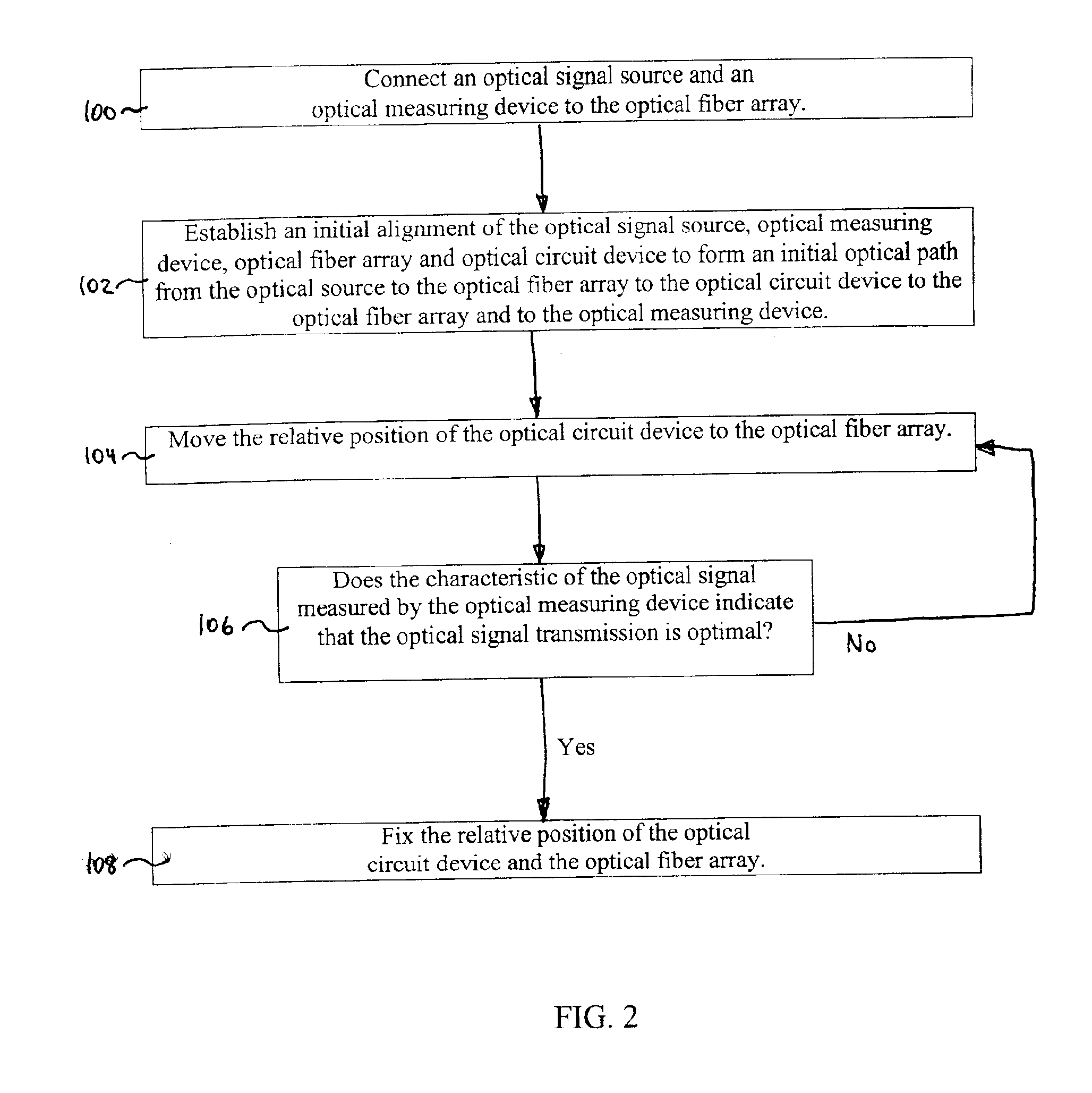Dynamic alignment of optical fibers to optical circuit devices such as planar lightwave circuits
a technology of optical circuit devices and optical fibers, applied in the direction of optical elements, measurement devices, instruments, etc., can solve the problems of inherently complex nature of the operation, affecting the overall device performance, and time-consuming
- Summary
- Abstract
- Description
- Claims
- Application Information
AI Technical Summary
Benefits of technology
Problems solved by technology
Method used
Image
Examples
Embodiment Construction
[0013]FIG. 1A is a block diagram representation of an example embodiment of an optical alignment system for aligning an optical fiber or optical fiber array20 to an optical circuit device 22 such as a PLC. The optical fiber or optical fiber array 20 may also be referred to as an optical waveguide(s) or optical element. Preferably, the optical circuit device 22 is a PLC. For convenience, the optical circuit device 22 may be referred to as a PLC 22 even though other types of optical circuit devices, such as one containing a light-guiding element in an optical fiber array, are also contemplated. The optical alignment system uses a loopback feature to provide an optical circuit path that allows an active optical alignment of the optical fiber array 20 to the PLC 22 to occur independent of the state of the PLC 22. The optical alignment system preferably is a “U”-shaped optically conductive path whose endpoints 34, 38 reside on the same side of the PLC 22. An optical signal source 32 is a...
PUM
 Login to View More
Login to View More Abstract
Description
Claims
Application Information
 Login to View More
Login to View More - R&D
- Intellectual Property
- Life Sciences
- Materials
- Tech Scout
- Unparalleled Data Quality
- Higher Quality Content
- 60% Fewer Hallucinations
Browse by: Latest US Patents, China's latest patents, Technical Efficacy Thesaurus, Application Domain, Technology Topic, Popular Technical Reports.
© 2025 PatSnap. All rights reserved.Legal|Privacy policy|Modern Slavery Act Transparency Statement|Sitemap|About US| Contact US: help@patsnap.com



